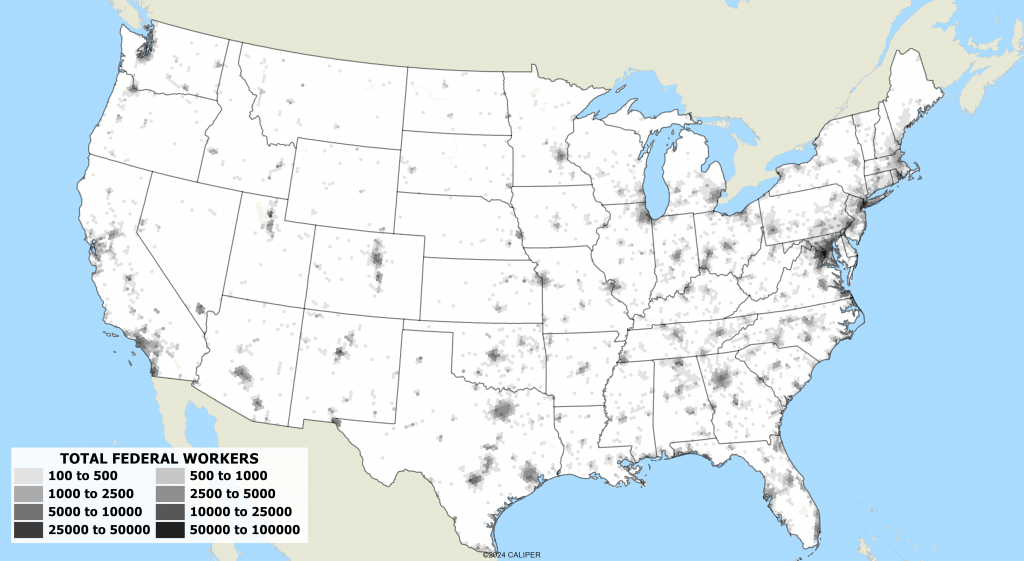At the start of a new federal administration in the United States, it is common to expect some changes. This year, many federal employees are seeing many changes to their day-to-day life, unfortunately including job loss for some. While most people think that federal employees work exclusively in Washington D.C., they are actually spread out across the country. Which communities are at risk for high levels of unemployment if there are more layoffs?
As seen in the map below of the percentage of the workforce in federal government employment, federal employment is concentrated in several key areas beyond Washington, D.C. While the nation’s capital and surrounding regions in Maryland and Virginia do employ a significant portion of the federal workforce, other communities also rely heavily on these jobs. The first map highlights areas where a large percentage of the labor force is employed by the federal government. Areas with darker shading, such as Los Alamos, New Mexico (where nearly 30% of the labor force is federal), Fort Leonard Wood, Missouri (21%), and Lexington Park, Maryland (19.84%), are particularly vulnerable to widespread job losses. Smaller cities that rely heavily on federal installations, such as military bases or research labs, face a greater risk if budget cuts result in layoffs.

The second map below provides insight into the total number of federal workers in different regions. Large metro areas, including New York, Atlanta, and Los Angeles, employ tens of thousands of federal workers. While the percentage of the labor force employed in federal jobs in these cities may be lower compared to smaller, more specialized communities, the absolute number of people affected by layoffs could still be significant. The Washington-Arlington-Alexandria, DC metro area has the highest total number of federal employees at nearly 489,000, making it the most heavily impacted region in absolute numbers.

Given the geographic spread of federal employment, potential layoffs could have ripple effects throughout the country. Smaller communities with high concentrations of federal employment may face an economic downturn if displaced workers struggle to find alternative job opportunities. Meanwhile, larger metro areas may see shifts in their labor markets as thousands of federal employees transition to new industries.
